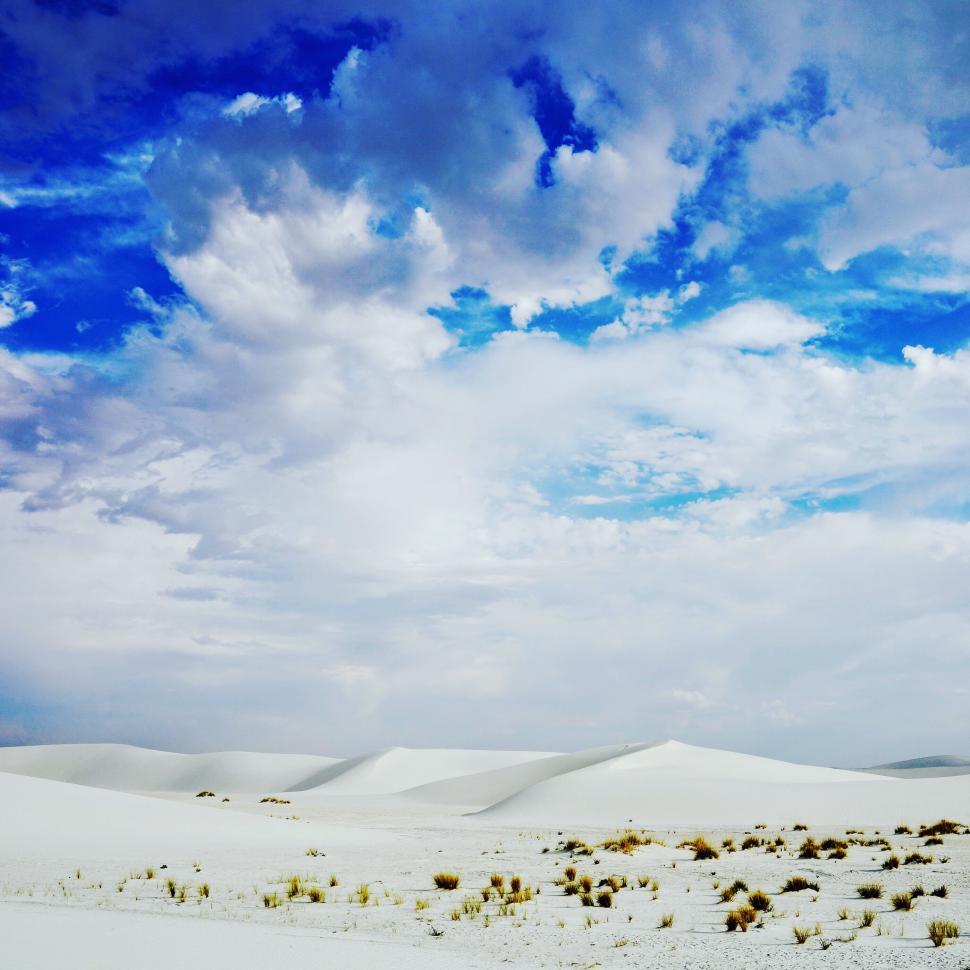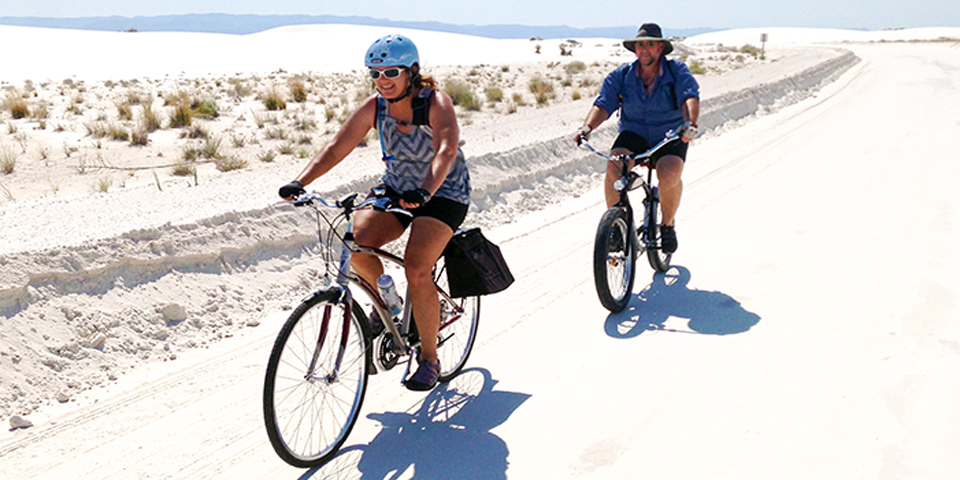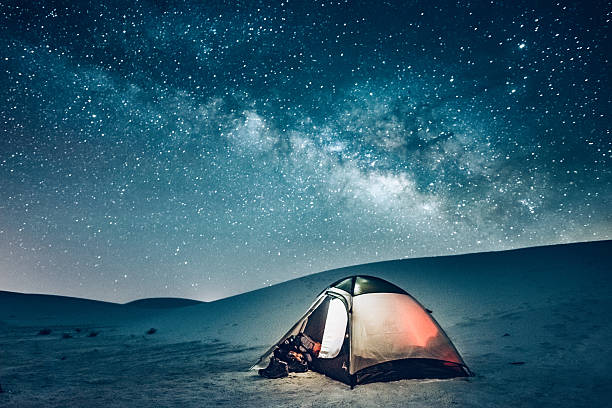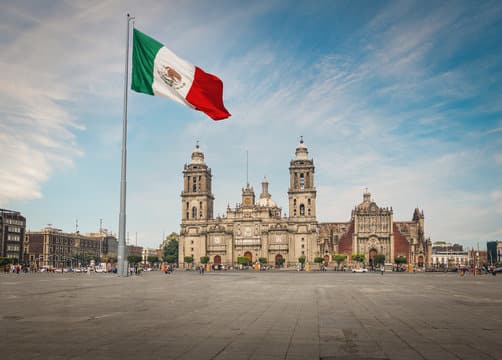
White Sands National Park is a unique form of National Park completely surrounded by the White Sands Missile Range. Located in New Mexico, in Dona Ana and Otero Countries, it covers 145,762 acres of lands, especially in the Tularosa Basin. White Sands National Park was established as a national monument in 1993 and in 2019 it was recognised as a national park in America.
White Sands National Park is widely recognised for its vast collections and unique landscapes of the gypsum and sand dunes. Although it’s largest and most preserved surface depositions of gypsum, parks striking surrounding natural white desert environments are really worth watching.
Related Search: Rocky Mountain National Park.
White Sands History

White sands were converted as a national monument on January 18, 1993, because of its area’s brilliant collections of gypsum dunes and white sands. Majority of present national parks preservation and initiatives goes to President Herbert Hoover.
But preservation of gypsum dunes started during the late 1800s, from the pioneer of a local booster named ‘Tom Charles’, a person who also played a significant role in the creation of the present park. According to Tom Charles, “Gypsum can be divided into 2 major classes, like Commercial and Inspirational.
Although present parks creation is also caused by the major natural and geological formations such as Water evaporation, weathering and dune formations. Despite natural setbacks, White Sands National Park also coincided with America’s great depressions, in some ways fortuitous due to the Roosevelt administrative focus on public works. But finally in 2019, the park was recognised as a national park in America.
Even today WPA funds were used to improve many parks areas and maintenance, which benefited and measure of development started within just a few years of openings. Yearly park welcomes more than 6, 00,000 visitors and in order to visit White Sands National Park and its surrounding landscapes, unique wildfires and white dunes.
How was White Sands Formed?

There are many facts and reasons behind how white sands was formed (according to some estimation it was formed 280 million years ago). But according to some research and geological study we can bifurcate into 3 steps.
1. Water Evaporation
Water evaporation in White Sands National Park began a million years ago. Present area of white sand was once filled by the vast areas of the lake called “Lake Otero”. Due to consistent fluctuations in weather and climate changes its water has dried up and water sand and minerals are left behind.
2. Weathering and Soil Erosion
Water evaporation, Weathering and Soil erosion are also one reason for its formation. Due to consistent winds in the areas, a good number of gypsum sands filled its massive dunes. These wind effects move sand around, causing it to accumulate in certain areas.
3. Dune Formation
After the park was filled by the vast collections of gypsum, it was shaped into a massive dunes by the consistent winds effects in the area. These winds help to move sand around, witnessing it in different areas of the park, resulting in the stunning white dunes for which the park is popular.
Top 5 Things to Do in White Sand National Park
1. Cycling

Cycling in White Sands National Park is a more demanding and popular thing done by many travellers. Cycling offers unobstructed views of parks, natural landscapes and unique geology like Gypsum dunes. Make sure that bicycles are allowed only to the Dunes drives and not for hiking trails or backcountry areas. Cycling pathways are more scenic in nature including paved and less hazards. Visitors have to follow certain guidelines while cycling such as wearing bright color, clothes and helmets are mandatory.
2. Hiking

Hiking is another well-known activity, offering a vast snow covered white gypsum dunes for hiking. Hiking is the perfect way to enjoy the silence and solitude of the dunes with perfect panoramic views of the surrounding landscapes and mountain ranges. Total Park offers 5 established hiking trails and each of the trails includes safety measures and responsibilities to their hikers.
3. Photography

Unique sort of activity, the park even opens its uniqueness and special features to photographers too. Anyone can click a good and perfect photo at White Sands National Park, either with their family or partners. Due to its vast coverage’s of dune field including different shapes and angles, timeless vistas and piercing contrast, surely visitors will pick their camera or phones. If visitors have a DSLR Camera it is well and good.
4. Dunes Driving

Most inspiring things or activities in White Sands National Park will finish only if they done scenic dunes drive. It is a 13 km drive which starts from the visitor centre into the heart of the gypsum dune fields. While your dunes drive the first 4 miles visitors come across the more paved, hard packed and gypsum road. Its total 16 miles (including round trip) of drive allow visitors to explore white sands, cultural and natural beauties, hiking areas, picnic areas and photographic sites.
3. Camping

One of the best ways to be a part of the White Sands National Park is Camping. Camping will help you to spend time with the park (day or night) making it a more worthwhile and mesmerising experience. Backcountry camping sites available on a first and first served basis. It is mandatory to obtain permits at the entrance booth to be a part of the unique ecosystems and nocturnal animals.
Fun Facts about White Sands National Park
White Sands National Park is filled with many fun and interesting facts and each of the facts will exhibit unknown and mysterious things about the park.
- Sand is very cool to touch. Unlike many other white sands, sands in White sands national park include silica crystals contents which absorb heat from the sun, making them cool year round.
- Park is surrounded by the Missile Range. Interestingly, White Sand National Park is very close to the White Sands Missile Range, which was known as Alamogordo Bombing and Gunnery Range which are established in 1941.
- The Park was Part of a “Salt Water”. During the late 1800s, the park was covered by the vast desert and salt for the region located within the park.
- Park is very close and well connected to many popular locations like Hollywood movies like Oppenheimer. Along with Hang ‘Em High, ‘The Man Who Fell to Earth’ also made here.
- White Sands National Park history is so connected and close to the history of the American Frontier. During 1800 the area of the national park was part of the American frontier and the story of Tularosa Basin, where the park is located and indigenous people lived.
- White Sands National Park contains the world’s largest Gypsum Dune fields. Gypsum dunes formed around a million years ago as a result of rainwater and snowmelt which flow into the Tularosa Basin.
- Home to the many endangered species, including 220 species of birds too. White Sands National Park holds many species of mammals like foxes, rodents, coyotes, bobcats, badgers, rabbits and porcupines.
- Most visited NPS site in New Mexico. White Sands National park welcomes around 7, 82,469 visitors in 2021, making it the most visited travel destination in the U.S.
- People came and settled in this park around 10,000 years ago. In search of basic necessities like food, water and shelter, the park welcomes the first group of indigenous tribe communities in Tularosa Basin in 10,000 year ago.
- Park belongs to both lowest and highest elevations. White Sand’s highest point is 4,116 feet at NE30 and lowest point is 3,887 feet at Lake Lucero.
White Sand National Park Tickets
If any visitors are willing to enter White Sands National Park they should come with any entrance pass issued by the park authority or website. Passes vary from person to person and tenures.
| Pass Type | Price in $ |
| Standard Pass | $15.00 to $25.00 |
| Annual Pass | $45.00 |
| American Beautiful Pass (including senior passes) | Free (seniors)- $ 80.00 |
Click here to Book your Tickets.
How to Get to White Sand National Park?
There are 2 major modes of transportation to reach White Sands National Park. Those are;
1. By Air
There are a good number of international flights available to nearby airports from around the world. Airports such as EI Paso International Airport (just 102 miles away from the park), Roswell International Air Centre (just 136 miles away from the park) and Albuquerque International Sunport (just 223 miles away) are major airports near in White sands National park. In each of these airports rental cars are waiting to get you to the National park.
2. By Driving
White Sands National Park is located in the southwest of the city of Alamogordo, New Mexico, which is a very convenient location for Holloman Air Force Base and Missile Ranges (US Highway 70, 15). Las Cruces, a nearby large city just 50 miles away from the park. In Order to using Google Maps travellers can also take a bike or car to reach the park.
White Sands National Park Weather
It is very important to understand the weather conditions of particular landmarks before planning a trip. Same like in White Sands National Park, weather is more versatile and varies from season to season.
From June to August, the park’s temperature is around 35℃ on average. But sometimes it may reach upto 38℃, which causes cooler weather during evening times.
From July to late September (considered as the rainy season) the place receives annual rainfall of 10 inches including afternoon thunderstorms.
From September to November, temperatures witnessed 27℃ and as low as 18℃ temperature. During this season evenings may be cooler and days are also sunny with light winds.
From December to February, the place receives more daytime temperatures with an average of 16℃. This season also witnesses cooler evenings with the average temperature of -5℃.
Best Time to Visit White Sand National Park
The Best Time to Visit White Sands National Park depends on the season and pleasant weather conditions of the park. “spring or fall” is considered as the most ideal time to visit parks and do a lot of things.
Both seasons offer ideal weather conditions, wild temperature, less crowds to watch gypsum dunes, wildflower bloom and desert color.
If visitors are willing to indulge in the snowy atmosphere and capture photographic opportunities, backpackers should visit during the winter season.
White Sand National Park Opening Hours
Keep in mind White Sand National Park is open daily year round except Christmas and Thanksgiving days.
May 23 to September 1 is considered the Summer Hours. Every day from 7:00 AM to Sunset (closes exactly 1 hour after sunset) the national park opens to the general public.
When it comes to the visitor centre, it is open from 9:00 AM to 5:00 PM. Make sure that visitor centre hours are subject to change throughout the year. Visitor centres open every day in a year except Christmas and Thanksgiving days.
Related Articles: Torch Lake, Michigan.
Q: How old are the White Sands National Park Dunes?

A: According to some estimations White Sands Dunes in National park was formed around between 7000 to 10,000 year ago. Present park holds around 4.1 billion metric tons of gypsum sand filled in dune field.
Q: Where is White Sands National Park?
A: White Sands National Park is located in the Southern New Mexico, on north side of U.S.




